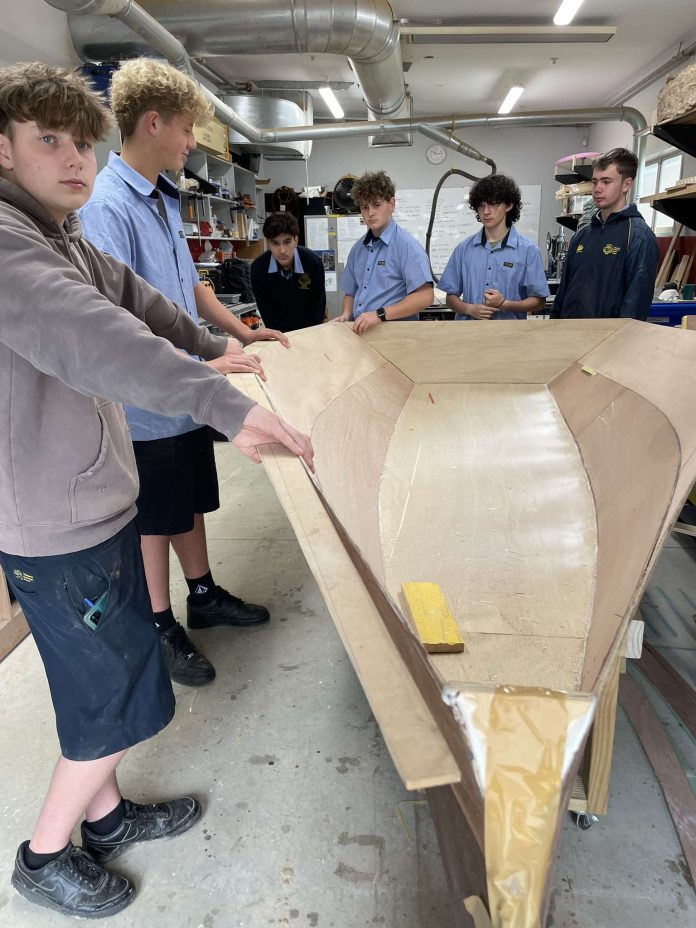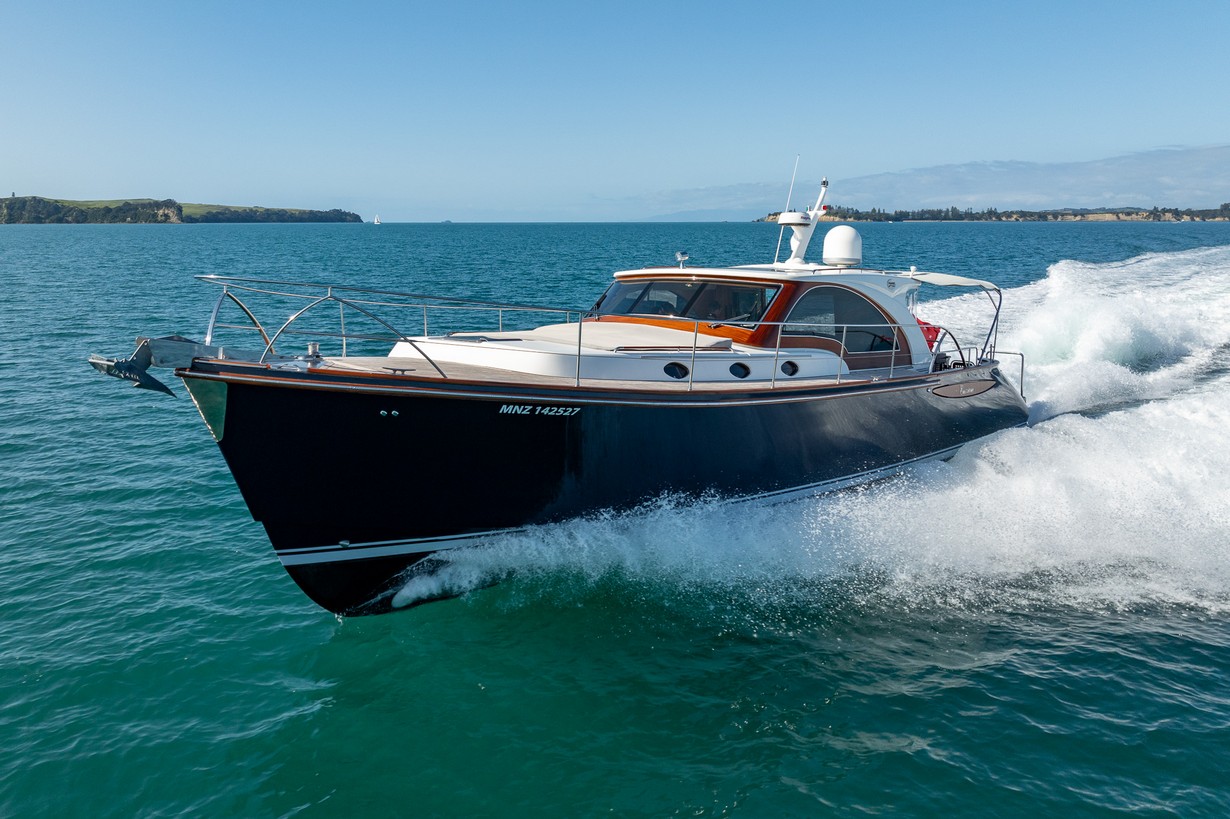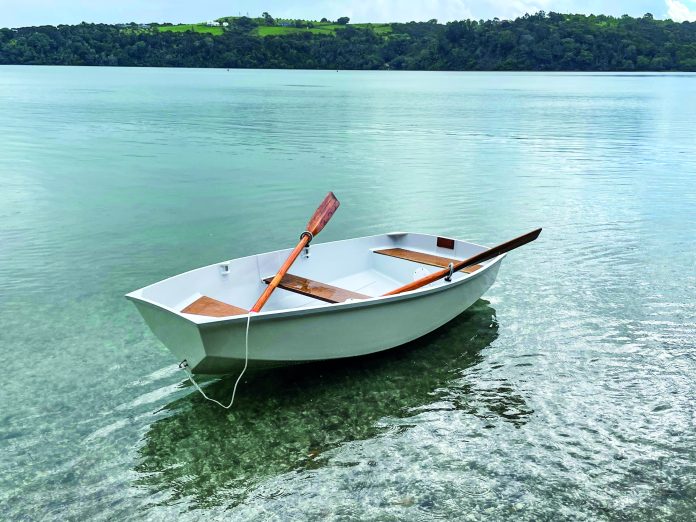A collaborative beginning
The project came about through a fortuitous collaboration. “Mark and I both started at the school this year,” says Cam. “I had this idea of doing something maritime, maybe canoes or small boats, but when I found out Mark was not only an experienced boat builder but also a designer, it was like a match made in heaven.”

Mark’s extensive expertise, having travelled and worked internationally in boat building, paired perfectly with Cam’s knack for structuring engaging, real-world projects for students. Together, they set out to create a programme that would blend craftsmanship with practical life skills.
Early days, big dreams
The programme is still in its infancy, running as a before-school activity. Twice a week, at 7:30 AM, a dedicated group of seven boys meets to work on a prototype boat. “Teenagers aren’t known for their early starts, so it’s a real testament to their commitment,” says Cam.

Next year, the project will expand to include curriculum time as students take on the restoration of a donated launch. This larger-scale venture will allow participants to apply their boat building skills to real-world refurbishing tasks like interior construction.
Making waves beyond the classroom
The programme, in its infancy, was targeted at the woodworking class which this year only has boys enrolled but girls have already signed up for next year’s cohort so the programme will also include girls. “It’s exciting to see that interest grow,” says Cam. “We have some great sailors at this school, and it’s fantastic to connect the dots between sailing and the craftsmanship that makes it possible.”

The goal isn’t just to teach boat building but to inspire a love of making, creativity, and practicality. Cam reflects on a similar project he ran at Northcote College, where students converted a school van into a camper. “Projects like these give students the confidence to tackle hands-on challenges. Who knows? They could build their own boats one day.”
Real-world learning
Mark emphasises the practical skills students develop in the programme: “They’re learning about plywood construction, composite materials, carbon fibre work for rudders, and epoxy resin mixing. These are industry-relevant skills that will give them a head start if they choose to pursue careers in this field.”

To reinforce the connection between their work and the broader maritime industry, the students recently visited local boat building businesses. “They were able to see that what they’re learning here directly translates to what’s happening in the workforce,” says Cam.
Community support
The project has already garnered significant community support, with contributions from individuals and businesses like Altex Coatings and Adhesive Technologies, which have provided paint and resin. The school also allocated a budget for initial supplies and is looking to invest more as the programme gains momentum.
“It’s heartening to see the community rally around us,” says Mark. “It’s not just about funding—it’s about creating a network of support that shows these kids what’s possible.”
Keeping the spark alive
Sustaining interest among students requires more than technical skills. Cam and Mark have found that progress and tangible results are key motivators. “When we started building the jig, interest was lukewarm,” says Mark. “But as the boat took shape, their excitement grew. Turning the hull upright was a turning point—they realised, “This is a real boat.’”

Barbecues and a relaxed, supportive environment also help maintain enthusiasm. “It’s all about creating an experience that’s rewarding on multiple levels,” says Cam.
Looking ahead
Both teachers hope the programme will grow into a permanent fixture, potentially evolving into a full-time class. “If we can expand and get more boats, we could accommodate more students,” says Cam. “The school leadership is very supportive, and with continued interest, who knows where it could go?”
Mark envisions a revival of the backyard boat-building culture that was once so prominent in New Zealand. “We’re teaching them skills they can carry forward—maybe even build a boat of their own someday. It’s about preserving a legacy while equipping these kids for the future.”

An inspiring example
Devonport’s boat-building programme is a shining example of how hands-on, practical learning can transform education. As Mark notes, “These kids aren’t just learning how to build a boat; they’re learning discipline, teamwork, and real-world problem-solving.”
In a world increasingly dominated by screens and abstract learning, projects like this offer a refreshing return to tangible, meaningful creation. Whether these students go on to careers in boat building or simply carry the skills into their personal lives, they’re sure to remember the pride of crafting something extraordinary with their own hands.





















